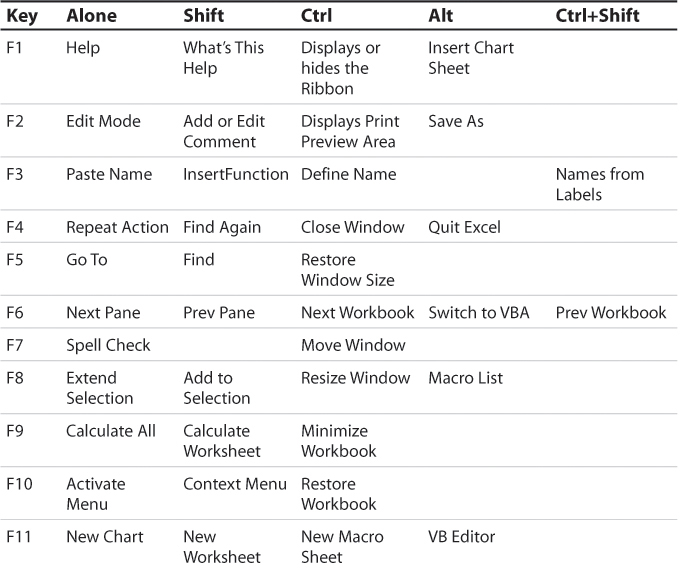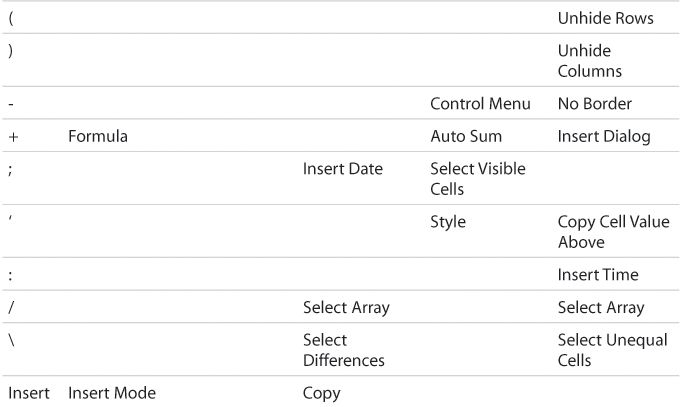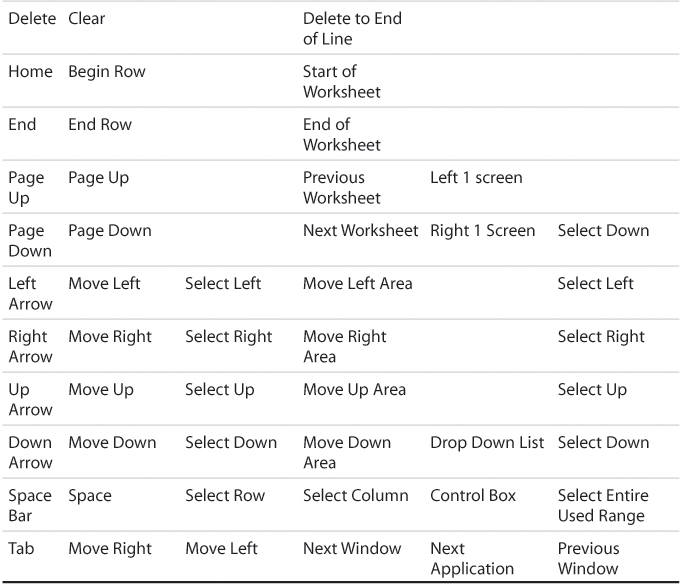A. Excel Shortcut Keys
Excel shortcut keys enable you to perform certain tasks using only the keyboard. The idea is that you increase your efficiency when you limit the number of instances your hands have to move back and forth from the keyboard to the mouse. Not only that, but it’s often quicker (requires fewer steps) to perform tasks using simple keystrokes rather than using the mouse. Getting in the habit of using these shortcut keys can help you work more efficiently and become more productive.
Using the Excel Shortcut Key Reference Table
Table A.1 lists the keyboard shortcuts you can use as an ongoing reference of the more commonly used Excel shortcut keys.
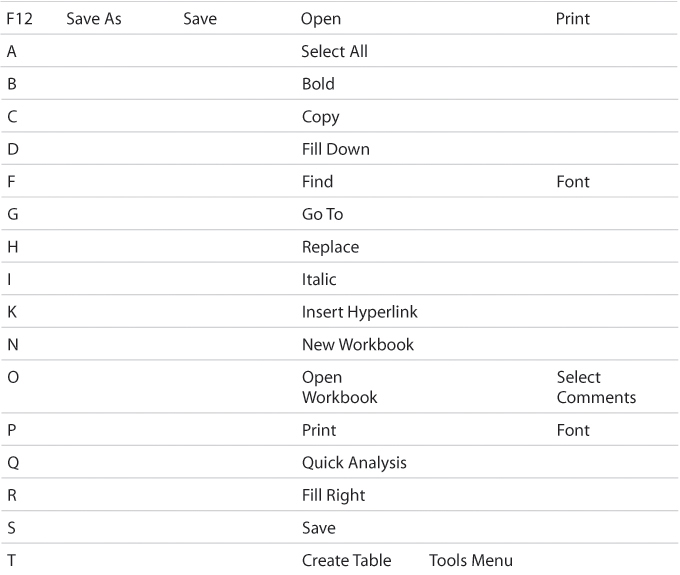
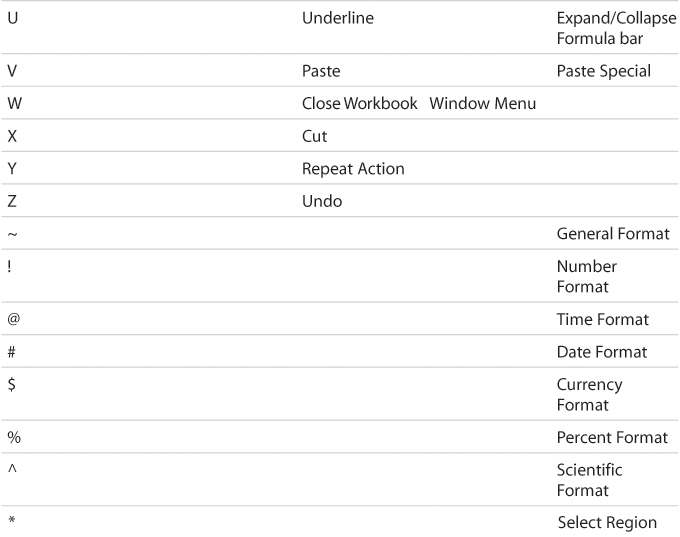
The Key column tells which root key on the keyboard you press. The Alone column tells you what task is triggered if you press the root key by itself. Some keys (such as the F1 key) trigger a task when you press them alone, whereas others (such as the letter A) do not perform a task.
The Shift column tells you what task is triggered if you press the root key and the Shift key. For example, when you press the F5 key with the Shift key (Shift+F5) the Find dialog box activates.
The Ctrl column tells you what task is triggered if you press the root key with the Ctrl key. For example, when you press the B key with the Ctrl key (Ctrl+B) bold is applied to the selected text.
The Alt column tells you what task is triggered if you press the root key with the Alt key. For example, when you press the F4 key with the Alt key (Alt+F4) Excel closes.
The Ctrl+Shift column tells you what task is triggered if you press the root key with the Ctrl and the Shift keys. For example, when you press the F12 key with the Ctrl and Shift keys (Ctrl+Shift+F12) the active workbook prints.

